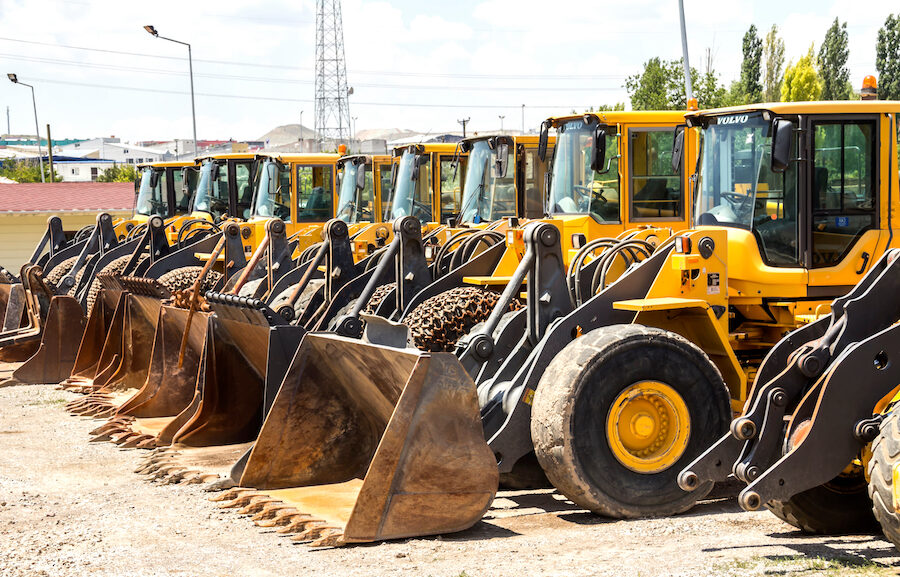Selling Construction Equipment is Already Challenging
Whether you are looking sell your outdated equipment fleet, liquidate after a Joint Venture project, or turn obsolete machines into cash—this guide is for you.
Most of you have already figured out that selling construction equipment—whether it’s new or used—can be pretty challenging.
Before we cover the most efficient methods to help you get rid of that equipment—and for the best price possible—it’s important that you understand the current challenges you should expect to face in this new, evolving market…
Consider the competition. The construction equipment market is more competitive than ever. Not only is there inventory just about everywhere you look, but buyers have more efficient means of acquiring this inventory. In other words, buyers aren’t just checking the complimentary newspaper at the truck stop anymore. It’s now far more advanced than that, which we’ll explain shortly.
The market will fluctuate. Considering the recent Covid pandemic—as well as the shaky economy—the market is more volatile than ever. Don’t be surprised if it’s more difficult to find buyers for that equipment.
Accurately valuing construction equipment can be challenging, as there are multiple factors that can impact its value, including—but not limited to—its age, condition, as well as the status of the current market.
Consider the age and condition of equipment. Although construction equipment doesn’t depreciate as bad a car, it’s not getting any younger sitting around that yard of yours. For those of you who are new to the equipment game, the age and condition of a piece of equipment can drastically impact its marketability—not to mention potential maintenance and repairs.
Consider transportation and logistics. Selling the equipment is half the battle—consider how you’re going to transport it. The cost of transportation and logistics has always been a significant factor when it comes to selling construction equipment, and—with this economy—don’t expect fuel prices to drop anytime soon.
There are legal and regulatory requirements that must be met when selling construction equipment—such as compliance with environmental and safety regulations. Failure to meet these requirements can result in legal penalties, as well as reduced marketability of the equipment.
So you understand the challenges of selling construction equipment. But, do you understand how most contractors and equipment owners are using an obsolete method, and they don’t even realize it?
An Obsolete Model That Doesn’t Serve Equipment Owners
Paying commissions to sell construction equipment is a common practice in the industry—so common that most sellers don’t even realize that there are alternative options out there.
What’s wrong with paying commissions?
Whether the commission is paid to an equipment dealer or broker, we’ve found fees that can range up to 20%. Let’s just assume the broker charges a 15% commission fee—and you want to sell a $500,000 crane—they would take $75,000!
With margins already so tight for construction equipment—from competition, lengthy sales cycles, manufacturing costs, and other factors—these commission fees can be brutal on the seller’s bottom line.
And guess what? Some dealers and brokers charge commissions regardless if the equipment sells or not. Of course, they may not charge the full commission amount, but—if you look carefully—you’ll see notice that the contract often has a clause for a non-selling fee.
And do you know who exactly is actually selling your equipment? Some of these huge sellers are so large—with high employee turnover rates—that they aren’t even sure who on the team is handling different accounts. You need to be certain that your crane isn’t being passed on to different account holders—or continually being moved to the bottom of the pile.
On a final note about the current, obsolete model—paying commissions can be time-consuming and bureaucratic. As we touched on earlier, contractors and equipment owners are often forced into positions where they have to deal with—sometimes, multiple intermediaries—and negotiate with commission fees. This negotiating can be draining—especially for those of you who are busy with the day-to-day operations of your business.
Subscription-Based Selling is the Future
Why would you pay an expensive commission fee when you can pay a flat-rate, affordable monthly fee?
Hypothetically—even if your equipment were to not sell—you would still be paying considerably less than the fees charged by the typical broker.
And if that equipment does sell—great—you’re still paying a fraction of the cost of those hefty 10%-15% commission fees.
And—for those of you selling multiple pieces of equipment, the monthly subscription fee on most of these sites remains the same to list multiple equipment. For example, on the Steel Giant Marketplace, their Silver package allows sellers to create 5 listings for only $50/month. And 10 listings for only $100/month.
Then there’s transparency. With the subscription-based model, contractors and equipment owners have more control over the sales process and can track the progress of their listings in real-time. This way, you can ensure that your equipment is both priced and marketed correctly—resulting in faster sales and higher returns. As we mentioned earlier—with those big brokers—how do you know who exactly is handling your “case”?
The subscription-based model is also easier to use—with less contracts and hidden fees. With Steel Giant, for example, you pay a flat rate and agree to their websites Terms & Conditions—which are fair and easy-to-understand. There’s not complicated or hidden fees.
Want to sell your equipment as quickly and easily as possibly—and for the best price possible? Call the Steel Giant at 772-205-4882. We’ll even create and manage your listings for you.
